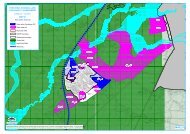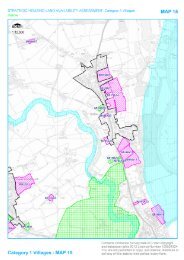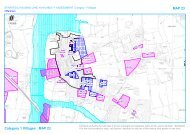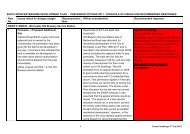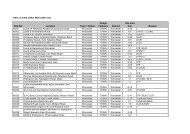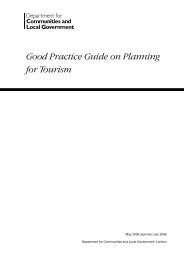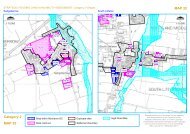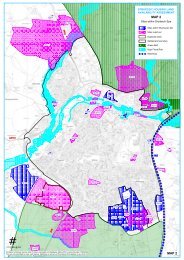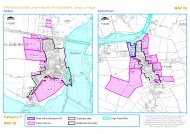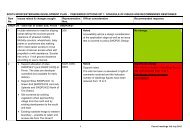Local Transport Plan 3 - Worcestershire County Council
Local Transport Plan 3 - Worcestershire County Council
Local Transport Plan 3 - Worcestershire County Council
You also want an ePaper? Increase the reach of your titles
YUMPU automatically turns print PDFs into web optimized ePapers that Google loves.
The ancient Wyre Forest, from which the District takes its name, can be found to the west of the area.To the North and East the District is largely rural, interspersed with the villages of Fairfield, Cookley,Blakedown and Wilden and a number of rural settlements, the largest of these being Wolverley andChaddesley Corbett.The District does not benefit from local access to the motorway network, however, despite this the areahas good connections to the Black Country and wider West Midlands Conurbation to the north, andWorcester to the South, provided by the local Principal Road Network, made up of the A448, A449, A450,A451, A456 and the A4025, provided by <strong>Worcestershire</strong> <strong>County</strong> <strong>Council</strong>. On the <strong>Worcestershire</strong> principalroad network, traffic trends indicate a slight drop in traffic over the last couple of years. This may be as aresult of the current economic climate. There are congestion issues on Kidderminster Ring Road and itsapproaches and the A448 between Kidderminster and Bromsgrove.Unfortunately, there are a number of Air Quality Management Areas in the Wyre Forest District: one atWelchgate in Bewdley Town Centre and one on Kidderminster Ring Road at the Horsefair. Both locationsare particularly challenging to mitigate; the former because of historic, dense street patterns and thelatter because of traffic volumes.Despite its large population, the district has only two railway stations on the national rail network atKidderminster and Blakedown. This may go some way to explain why Kidderminster ranks as the secondbusiest railway station in the county. These stations are served by local services which operate betweenWorcester and the West Midlands conurbation, although there are also a limited number of directservices to London provided by Chiltern Railways. Approximately 1.3 million passengers usedKidderminster Station during 2008/09, with a 67% increase in demand between 2004/05 and 2008/09.There is a bus station in the centre of Kidderminster, however, this is of poor quality, and so investmentwill be required to develop more suitable passenger transport stopping and interchange facilities in thetown. The area is principally served by an urban bus network centred on Kidderminster; however, thereare a number of less frequent interurban services which operate to Bridgnorth, Bromsgrove, Worcester,Ludlow and the West Midlands Conurbation. This is supported by a community transport service linkingrural areas to the Wyre Forest towns. Approximately 3.5 million passenger travelled by bus in the WyreForest in 2008/09, with an encouraging 15% increase in demand over the LTP2 period.In the Wyre Forest, 73% of residents drive to work, 10% of residents work from home, 11% of residentswalk or cycle to work, 2% of residents catch the bus to work, 2% of residents take the train to work andthe remaining 2% get to work by other means. Recent usage trends indicate that the numbers of personsusing the Wyre Forest's bus and rail services is steadily rising over time.




